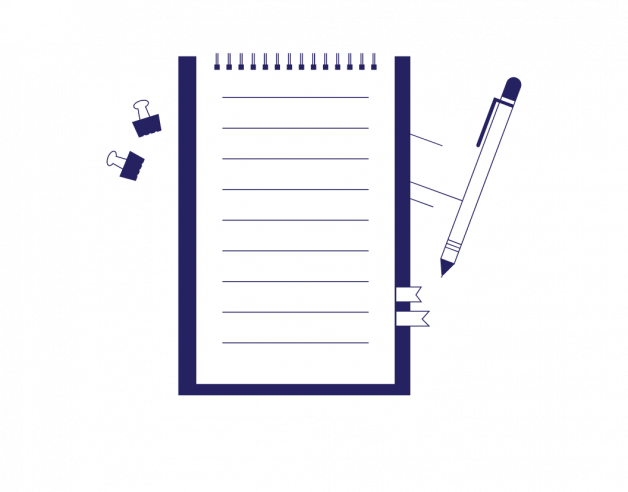
- 5-minute read
- 18th November 2022
Essay Tips: 7 Types of Plagiarism
Essay writing can be stressful. You need to research your topic, write the essay, and compile a reference list that matches the required referencing style. And it all becomes more complicated with a thesis or dissertation.
Additionally, you must avoid the cardinal sin of essay writing: plagiarism! As a student, you’re likely familiar with plagiarism, but you might not understand the full extent of it or its consequences. Did you know that it comes in various forms? In this post, we’ll delve into the ways that you can (often unintentionally) plagiarize in your writing and how to avoid it.
What Is Plagiarism?
Plagiarism is the act of borrowing ideas from another author and passing them off as your own. In the academic world, it means you take ideas from a source and add them to your paper without a citation.
Plagiarism is a big no-no in the world of academia! Using another author’s ideas to support your claims is fine (and expected), but not if you don’t give said author credit.
Why Does Plagiarism Matter?
Presenting another author’s work as your own is lying. Not only that, but you also don’t learn anything by plagiarizing. The whole point of earning a degree is to learn something, right?
Moreover, plagiarism is disrespectful to the original writer. You likely wouldn’t like it if someone plagiarized a book you worked so hard to write.
Types of Plagiarism
Complete plagiarism (intentional)
This occurs when you submit another author’s work in your name. For example, paying someone to write your essay and then submitting it as your own falls under this category. Another would be using work from a friend or relative, such as submitting an essay for a history class that your older brother wrote and submitted when he took the same class three years ago.
Direct plagiarism (intentional)
This happens when the writer includes specific sections or paragraphs without crediting or acknowledging the author. It’s similar to complete plagiarism, with the difference being that it doesn’t plagiarize the entire paper. An example of this would be to directly insert a line or two from your source into your essay without a citation.
Paraphrasing plagiarism (unintentional)
The writer presents another author’s idea and changes a few words or phrases. While the writer has added some of their own words, they have not given credit where credit is due. Paraphrasing is acceptable, but not without properly acknowledging the author.
Self-plagiarism (unintentional)
Wait, it’s possible to plagiarize yourself? After all, you’re free to use your own thoughts in an essay…right? Well, yes and no.
Find this useful?
Subscribe to our newsletter and get writing tips from our editors straight to your inbox.
Let’s say you wrote an essay about the dangers of cyberbullying last year, and now you’re writing an essay about cyberbullying awareness in schools. Reusing content from your previous essay would be plagiarizing yourself. However, using a past essay as a source is acceptable if you cite it and properly acknowledge the author (which, in this case, is you).
Patchwork plagiarism (intentional)
This occurs when the writer blends their work with that of another author. Taking a clause from an original source and embedding it into your own sentence exemplifies this.
Source-based plagiarism (intentional)
A writer cites their sources correctly but presents them misleadingly. For example, a writer might reference a secondary source in their essay, but they only credit the primary source from which that secondary source is derived. Another example would be falsifying sources.
Accidental plagiarism (unintentional)
Small things can cause this, and often, the writer doesn’t realize they’re plagiarizing another writer’s work. Common examples include:
- Forgetting to cite sources
- Incorrectly citing sources
- Failing to add quotation marks around cited material
Plagiarism Consequences
Think of plagiarism as an academic criminal record. Consequences will depend on your university’s plagiarism policies and the course that you’re writing the essay for. Consequences include:
- Automatically failing the assignment
- Failing the course
- Academic probation or suspension
- A permanent failing grade that denotes plagiarism on your record (bad news if you wish to pursue graduate studies)
- Being expelled from the institution
It’s important to understand that plagiarism won’t go unnoticed. Professors can differentiate between your work and someone else’s. Many universities subscribe to plagiarism detection software, and some professors even require you to upload your assignments to special plagiarism-checking software upon submission.
Avoiding Plagiarism in Your Writing
You can avoid intentional and unintentional plagiarism by doing the following:
- Paraphrasing and directly quoting correctly
- Keeping track of the sources used for your essay
- Citing as you write your essay
- Not passing other authors’ work as your own
- Reviewing the correct citation format for the required style guide
- Citing common knowledge in your field (for those outside of it)
To summarize, plagiarism is an academic no-no – it’s a form of lying, and it’s disrespectful. It can be intentional or unintentional, and in either case, it results in serious consequences. If you plagiarize, you will be caught, so be sure to cite your sources and paraphrase correctly. And yes, you can plagiarize yourself.
Proofreading and Editing
Of course, proofreading your essay can make all the difference in avoiding plagiarism. Are you currently working on an essay? Does the thought of proofreading it sound daunting? Don’t have the time?
Fear not! Our expert proofreading team can check for the correct use of citations and ensure perfect spelling, punctuation, and grammar. Consider submitting a 500-word document for free.




